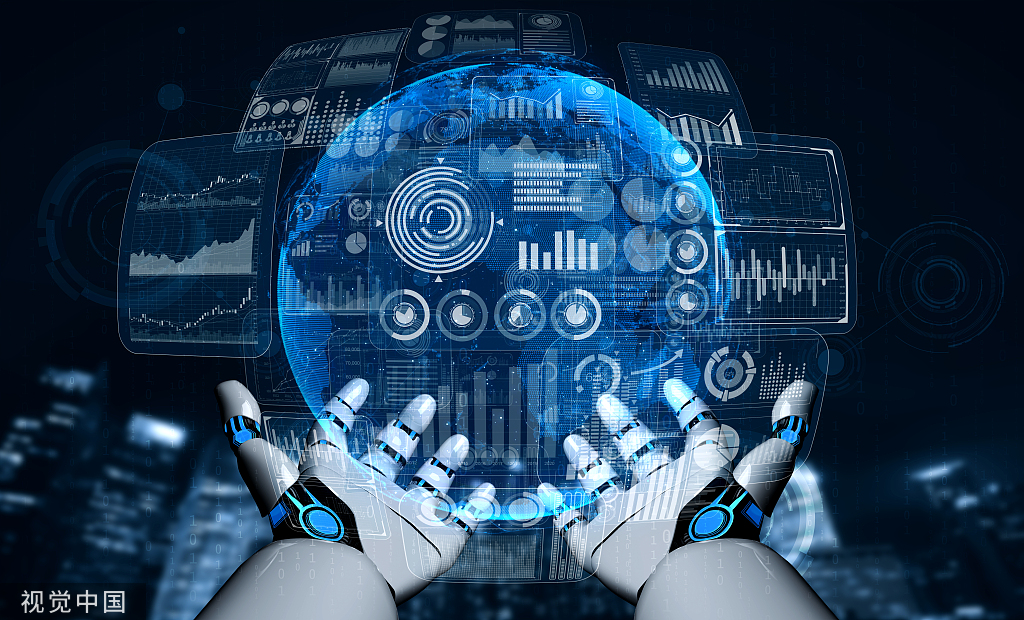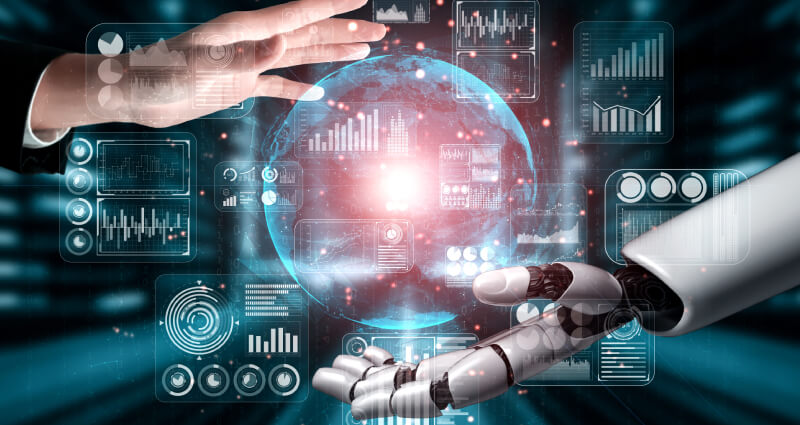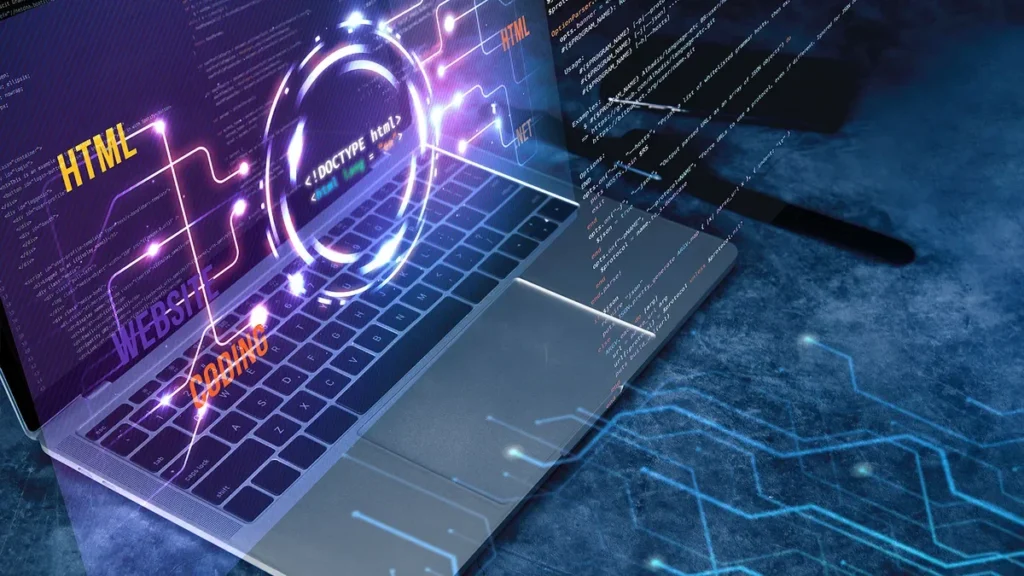Table of Contents
Introduction:
Digital computing has revolutionized industries, science, and everyday life. However, it has its limitations, particularly in terms of power consumption, scalability, and performance in handling complex computations like large-scale simulations or cryptographic problems. As the demand for greater computational power increases, traditional digital computing architectures—based on binary logic and semiconductor-based transistors—may struggle to keep pace.
Researchers are now looking beyond digital computing, venturing into the realms of quantum computing, optical computing, neuromorphic computing, and DNA computing. These emerging fields represent the next frontier in computational power and efficiency, each offering a potential solution to the challenges facing traditional digital systems.

1. Quantum Computing: Unlocking Unparalleled Computational Power
What is Quantum Computing?
Quantum computing harnesses the principles of quantum mechanics, such as superposition and entanglement, to perform computations at speeds unachievable by classical computers. Unlike digital computers that process bits (0s and 1s), quantum computers use qubits, which can represent both 0 and 1 simultaneously. This allows quantum computers to perform many calculations in parallel.
Potential Applications
Quantum computing holds immense promise for solving problems that are currently infeasible for digital computers. Some of its key applications include:
- Cryptography: Quantum computers could break classical encryption algorithms, such as RSA, by efficiently factoring large numbers.
- Drug Discovery: They can simulate molecular structures to accelerate the discovery of new drugs.
- Optimization Problems: Quantum algorithms can optimize complex systems, such as logistics networks, financial portfolios, or supply chains.
Case Study: Google’s Quantum Supremacy
In 2019, Google claimed “quantum supremacy” when its quantum computer performed a calculation that would have taken the world’s fastest supercomputer over 10,000 years to complete. While there is debate about the practical implications of this milestone, it represents a significant step forward in the field of quantum computing.
2. Optical Computing: Speed of Light Processing
What is Optical Computing?
Optical computing uses light (photons) instead of electricity (electrons) to transmit and process data. Since light travels faster and experiences less interference than electrical signals, optical computing can potentially process data much more quickly and efficiently than digital computers.
Potential Applications
- High-Speed Data Processing: Optical computing could drastically speed up processing times for large datasets, such as those used in AI and machine learning.
- Energy Efficiency: Light-based systems could reduce the energy consumption of data centers and other high-performance computing environments.
- Telecommunications: Optical networks already power much of the world’s internet infrastructure, and advances in optical computing could further optimize these systems.
Case Study: MIT’s Optical Neural Network
Researchers at MIT have developed an optical neural network that uses light to perform machine learning tasks. This system has the potential to outperform traditional neural networks in terms of speed and efficiency, making it a promising candidate for future AI applications.

3. Neuromorphic Computing: Mimicking the Brain’s Architecture
What is Neuromorphic Computing?
Neuromorphic computing seeks to replicate the architecture of the human brain in hardware, using artificial neurons and synapses to process information. By mimicking the brain’s highly parallel and energy-efficient computing model, neuromorphic systems could potentially solve complex problems more efficiently than digital computers.
Potential Applications
- AI and Machine Learning: Neuromorphic systems could revolutionize AI by enabling more efficient, brain-like learning and decision-making processes.
- Robotics: Neuromorphic computing could enhance robotic systems by providing real-time processing capabilities for tasks like vision, navigation, and decision-making.
- Sensory Processing: Neuromorphic chips could be used to process sensory data (such as sight, sound, and touch) in real time, enabling more advanced prosthetics and assistive devices.
Case Study: Intel’s Loihi Chip
Intel has developed a neuromorphic chip called Loihi, which mimics the way neurons communicate and adapt in the brain. Loihi is being used to explore applications in AI, robotics, and sensory processing, and has demonstrated the ability to learn new tasks much more efficiently than traditional AI models.
4. DNA Computing: Biological Computation
What is DNA Computing?
DNA computing uses biological molecules, such as DNA, to perform computations. Unlike traditional computers, which rely on silicon-based transistors, DNA computers use the chemical properties of DNA to store and process information.
Potential Applications
- Cryptography: DNA computing could be used to develop new encryption methods that are more secure than traditional techniques.
- Data Storage: DNA can store vast amounts of data in a tiny space, making it an attractive option for future storage technologies.
- Biocomputation: DNA computers could be used to solve complex biological problems, such as protein folding or gene sequencing.
Case Study: DNA-Based Molecular Computing
In a groundbreaking experiment, researchers successfully used DNA to solve a complex combinatorial problem, demonstrating the potential of DNA computing for solving specific types of mathematical problems. This experiment opened the door for future research into the use of biological molecules in computation.

5. Ternary Computing: Beyond Binary Logic
What is Ternary Computing?
While digital computers rely on binary logic (0s and 1s), ternary computing uses three possible states: 0, 1, and -1. This system, also known as “trinary” or “ternary” computing, could offer certain advantages over traditional binary systems, such as more efficient processing and reduced energy consumption.
Potential Applications
- Efficient Algorithms: Ternary systems could potentially process certain types of algorithms more efficiently than binary systems.
- Lower Energy Consumption: By reducing the number of operations needed to perform certain tasks, ternary computing could reduce the energy required for large-scale computations.
Case Study: Setun Computer
One of the earliest examples of ternary computing was the Setun computer, developed in the Soviet Union in the 1950s. Although it was not widely adopted, the Setun demonstrated the feasibility of ternary logic and laid the groundwork for future research in this area.
6. Memristor Computing: A New Type of Memory Device
What is Memristor Computing?
Memristors are a type of electronic device that can “remember” their previous electrical state even after being powered off. This unique property makes them a promising candidate for future computing systems, particularly in the fields of memory storage and neuromorphic computing.
Potential Applications
- Non-Volatile Memory: Memristors could be used to develop new types of memory devices that retain data even when powered off, offering advantages over traditional RAM and flash memory.
- Neuromorphic Systems: Memristors could play a key role in the development of neuromorphic computing systems by mimicking the way synapses store and transmit information in the brain.
Case Study: HP’s Memristor Research
HP has been at the forefront of memristor research, developing experimental devices that demonstrate the potential of memristors for memory storage and neuromorphic computing. While the technology is not yet ready for commercial use, it represents a promising area of research for future computing systems.

Conclusion:
As digital computing approaches its physical and practical limits, researchers are exploring a wide range of alternative computing paradigms. From quantum computing and optical computing to neuromorphic systems and DNA-based computation, these emerging technologies can potentially revolutionize the way we process information.
While many of these technologies are still in the research phase, the progress is remarkable. As we continue to push the boundaries of what computers can do, the future of computation looks brighter than ever.
Why are researchers looking beyond traditional digital computing?
Traditional digital computing is reaching its physical limits in terms of speed, power consumption, and efficiency. As more complex problems emerge, such as cryptographic challenges, molecular simulations, and large-scale data processing, researchers are exploring alternative computing models like quantum computing, neuromorphic computing, and DNA computing to overcome these limitations.
What is quantum computing, and how is it different from digital computing?
Quantum computing uses the principles of quantum mechanics, such as superposition and entanglement, to process information. While digital computers process data in binary bits (0s and 1s), quantum computers use qubits, which can represent both 0 and 1 simultaneously, allowing for parallel processing of complex calculations that would be infeasible for classical computers.